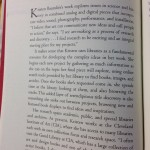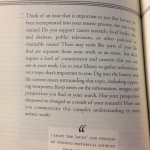I recently got an invitation to a unique banquet – of sights, sound, and taste. I could not attend, but found this event to be an interesting combination of performance, site, and food.
The event was part of The Wind Tunnel Project, which is a series of events that brings together new commissions and performances by artists in the UK and other international artists. The events all take place at the flight testing center buildings, which were used to advance British aviation techniques, and have been closed for over 40 years.
On Friday June 20th and 21st will be the Dream of Flying – A Gastro Geographical Aerobanquet, which will be held in the air return duct of the 24ft, 1935 wind tunnel. (Unfortunately – I can not attend. Can’t make it to England by then..)
Artist Caroline Hobkinson will host an aerobanquet that tells the story of the dream of flying in 7 courses. Hobkinson’s work can be seen on her Stirring with Knives site. Past banquets she has created have incluced high protein rolls made with insect flour, a fur lined cup filled with liquid, a whole alligator served up on a table, 3d printed food, and spherified liquids.
Her work combines not just unusual food but touch and sound. The artist calls it cross modal stimulation, and for this event she is using locally sourced food. Her work curates dining experiences that encourage diners to reassess the way they eat.
Her work looks at the world through food: its history, the rituals how we eat and the traditions of how we prepare it. She is obsessed with the spectacle of eating and how we can modulate flavor by using different sound frequencies.
Her three favorite ingredients are fishing wire, helium and liquid nitrogen.
Image Sources and Links:
http://thewindtunnelproject.com/


